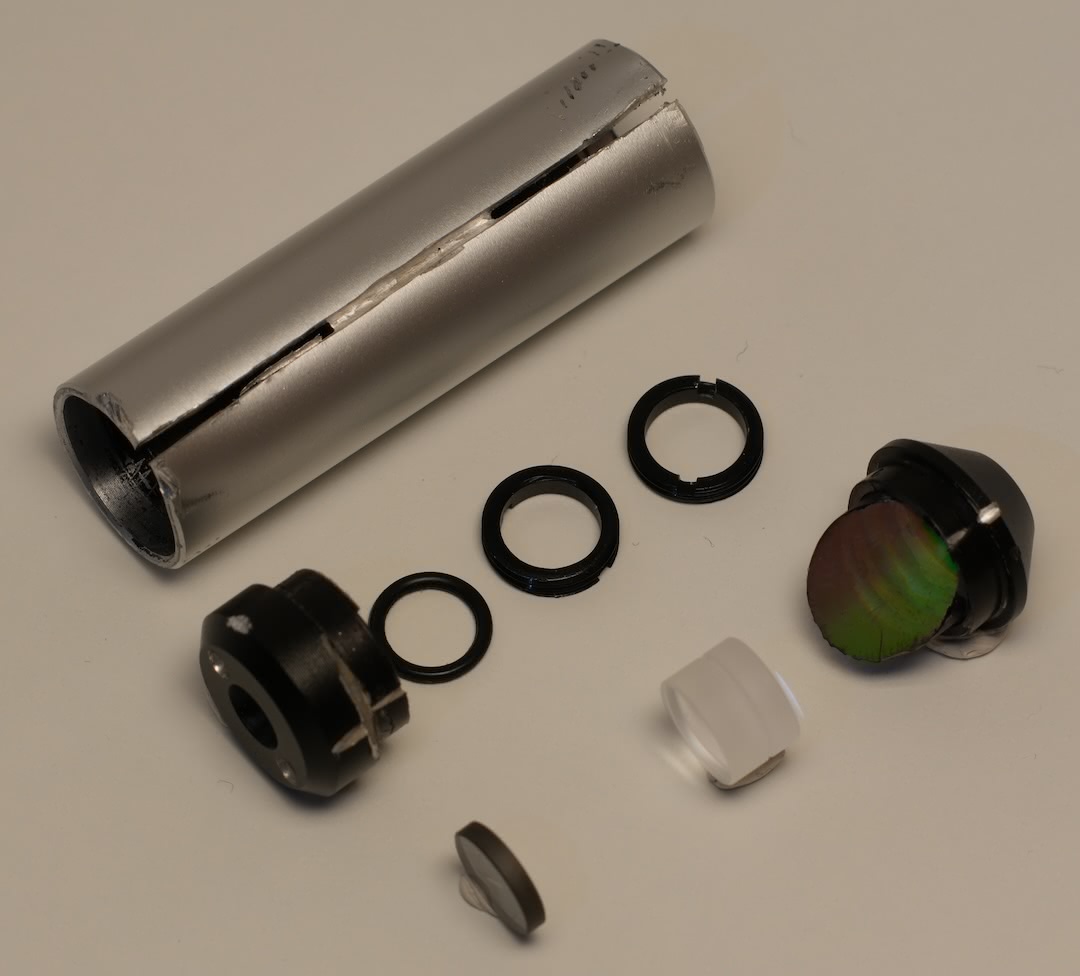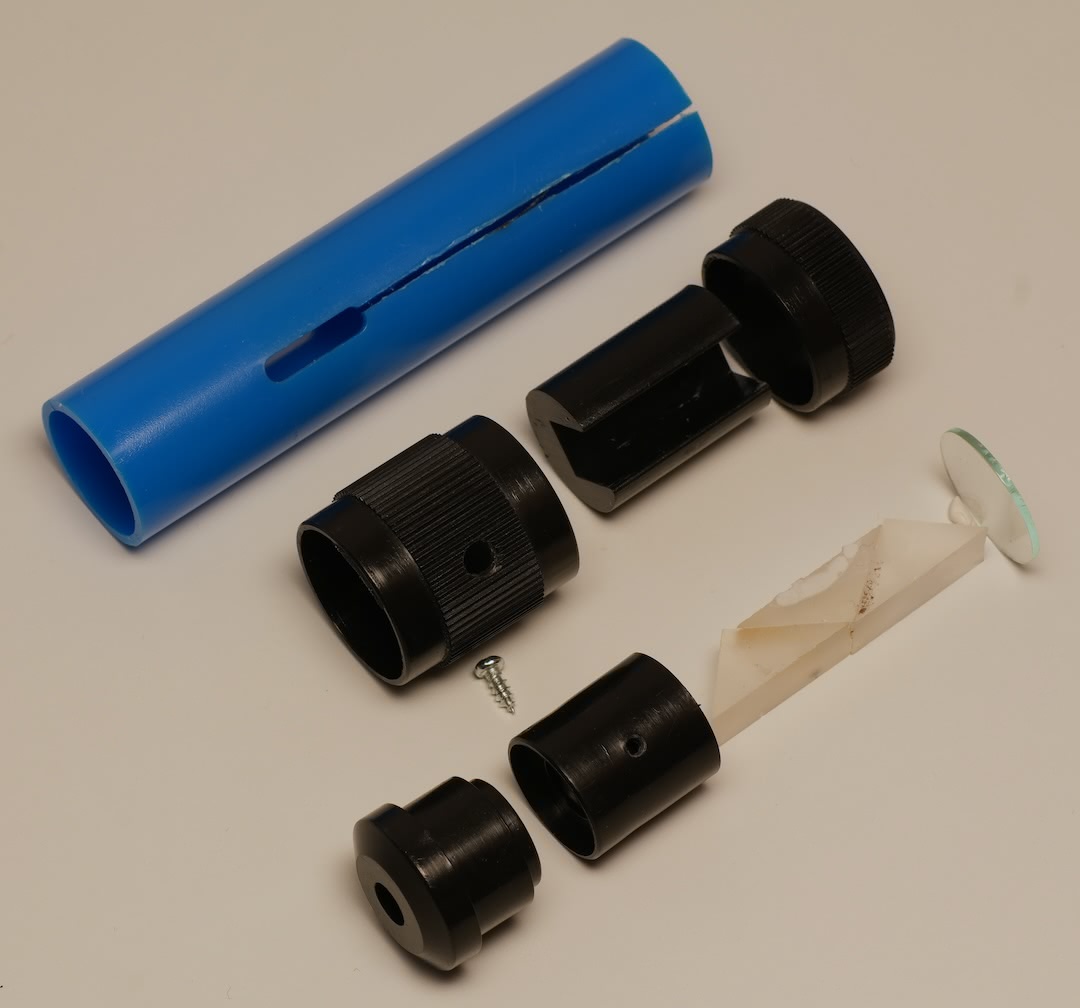Spectroscope Tear Down
October 18, 2024I bought two spectrscopes and have illustrated how I think they work.
One of them is using a diffraction grating to separate light into different wavelengths, while the other is using a prism to separate light using refraction.
Diffraction spectroscope
The spectroscope consists of an entrance slit, a collimating lens, and a diffraction grating. It is housed in an aluminium tube and the ends are press fit into the tube. The slit and lens are held in place with retaining rings and the grating is glued into place.
Photo of the dismantled spectroscope:

Refraction spectroscope
The prism spectroscope consists of an entrance slit, a collimating lens, and a stack of three prisms glued together.
The first and last prisms are made of low dispersion glass and the middle prism is made of high dispersion glass.
Photo of the dismantled spectroscope:

Comparison
The grating spectroscope shows a more uniform spectrum compared to the prism spectroscope It is also harder to find the correct position for the eye when using the prism spectroscope.
The prism spectroscope allows for adjusting the focus, which makes it possible to see more detail in the spectrum.
References
- Abbe number, Wikipedia. https://en.wikipedia.org/wiki/Abbe_number
- Sellmeier equation, Wikipedia. https://en.wikipedia.org/wiki/Sellmeier_equation
- M. N. Polyanskiy. Refractiveindex.info database of optical constants. Sci. Data 11, 94 (2024) https://doi.org/10.1038/s41597-023-02898-2/